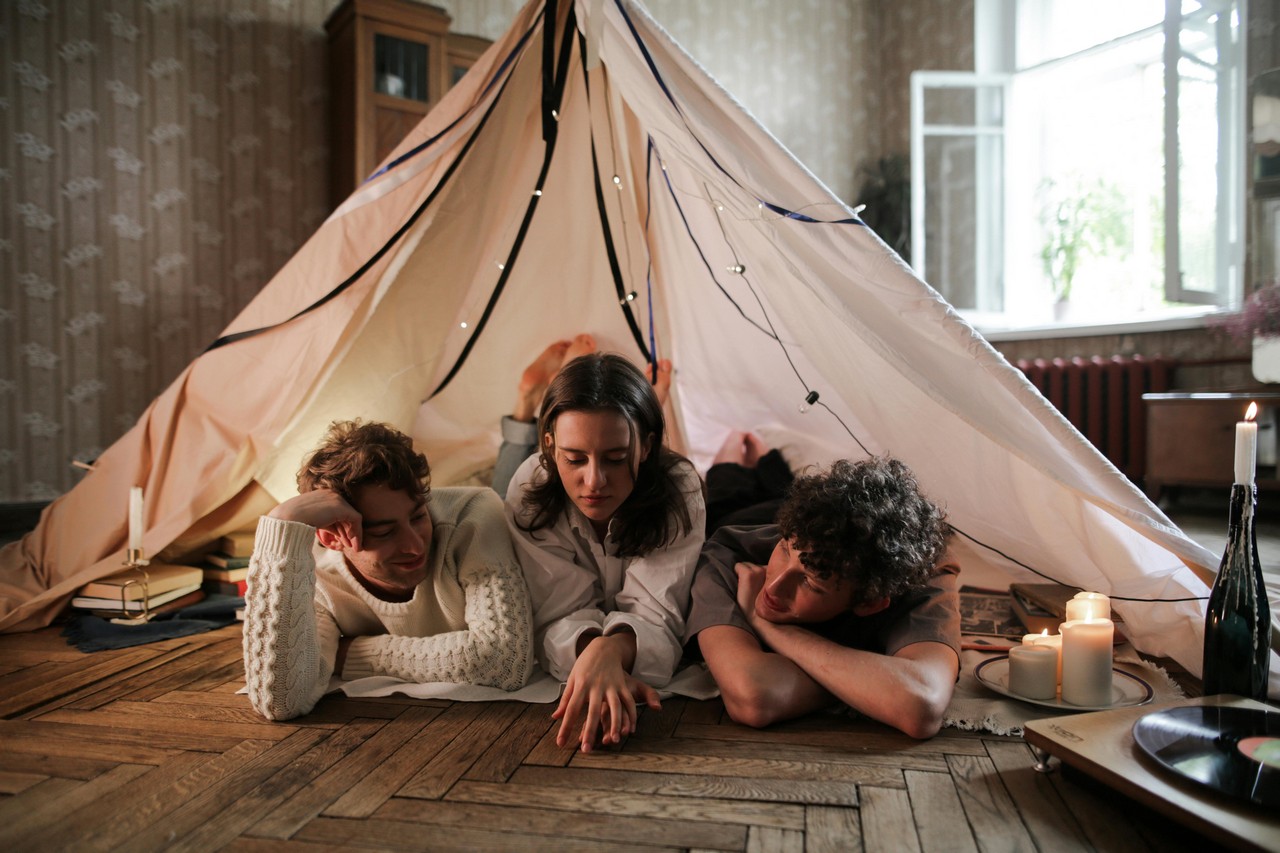The decision of where to rent a home is a significant one. It’s not just about securing a place to live, but also about choosing the kind of life you want to lead. Do you prefer the fast-paced, convenience-driven lifestyle of a city? Or does the idea of quiet, space, and natural beauty call to you from the countryside? Renting in urban and rural areas presents two very different experiences, each with its own unique set of pros and cons that will shape how you live, work, and play.
Urban areas tend to be vibrant, crowded, and full of life. They’re places where cultures, ideas, and opportunities converge, offering a dynamic atmosphere for those who crave stimulation and diversity. Whether it’s the buzz of a street market, the hum of public transportation, or the glitter of city lights reflecting off skyscrapers, urban living places you in the center of it all. The convenience of having restaurants, shopping, and entertainment just steps away can be alluring, especially for those who thrive on activity.
Rural areas promise a slower pace, with wide-open spaces, fresh air, and the kind of tranquility that’s hard to find in a city. If you’re someone who enjoys solitude, the sound of nature, and an environment that feels removed from the stress and noise of urban life, rural living offers a respite from the chaos. Living in the countryside might mean you have more space—both indoors and outdoors—but you may also find yourself farther away from conveniences like grocery stores, hospitals, and entertainment options.
Transportation: The Freedom of Options vs. The Necessity of a Car
One of the most noticeable differences between urban and rural living is how people get around. In urban areas, the transportation infrastructure is typically well-developed, offering a multitude of options for commuters. Whether it’s hopping on a subway, bus, or tram, urban dwellers often have access to public transportation that’s reliable, frequent, and relatively affordable. For those who prefer a greener mode of travel, many cities also offer bike-share programs, electric scooters, and walkable streets. This ease of movement not only saves time but also eliminates the need for owning a car, which can be a significant financial relief in terms of parking, maintenance, and insurance costs.
Alternatively, rural areas generally lack the extensive public transportation networks found in cities. If you’re renting in the countryside, owning a car becomes a necessity rather than a choice. Driving is the main way to get to work, run errands, or even meet friends. While rural roads may be scenic and less congested than city streets, they also come with their own challenges—longer commutes, unpredictable weather conditions, and fewer nearby gas stations or service centers. However, some might argue that the personal freedom that comes with driving your own car through beautiful landscapes outweighs the inconvenience of not having public transit options.
For those who enjoy the simplicity of walking to work or taking a quick bus ride, city living might be more appealing. But if you relish the independence of driving through quiet country roads and don’t mind the added responsibility of vehicle ownership, rural living could be a perfect match.
Housing: Compact Convenience vs. Spacious Serenity
Housing options differ dramatically between urban and rural areas, and choosing one over the other can deeply impact your lifestyle. Urban areas are typically characterized by high-density living arrangements like apartments, lofts, and condos. Renting in a city often means smaller spaces at higher costs, but what you sacrifice in square footage, you gain in convenience. Many urban rentals are located in the heart of bustling neighborhoods where everything—grocery stores, restaurants, coffee shops, and gyms—might be within walking distance. The trade-off here is that you’re likely to live in a smaller apartment, possibly with less outdoor space and closer proximity to neighbors.
Space is one of the biggest perks in rural areas. Rural rentals often come with larger homes, more bedrooms, and expansive yards or land. If you value having a garden, a backyard, or even just more room to breathe, rural housing delivers on all these fronts. Imagine having your morning coffee on a porch overlooking rolling hills or walking through your own wooded property. For families, couples, or even individuals who want a quieter lifestyle with more room for hobbies like gardening, woodworking, or animal care, rural living can feel like a dream come true.
That said, rural living often means you’ll have to trade off access to certain amenities. While an urban apartment might be just blocks away from a grocery store, rural renters may need to drive 20 to 30 minutes—or even longer—to buy essentials or visit local services. This lack of proximity to shops, restaurants, and healthcare can be a major drawback for those who prefer convenience. Conversely, the privacy, space, and natural beauty of a rural home can provide the kind of peaceful living that’s hard to find in urban environments.
Job Opportunities: Variety vs. Niche Markets
Employment opportunities are another key difference between urban and rural areas. Cities are often hubs for industries like finance, healthcare, education, technology, and the arts. The sheer density of companies and businesses means there are generally more job options in a wide variety of fields. Whether you’re a lawyer, a software developer, a teacher, or a creative professional, urban areas usually offer the kinds of job opportunities that allow for career growth and networking. Additionally, cities often host corporate headquarters, research facilities, and universities, which can provide access to higher-paying jobs and better professional development.
Conversely, rural areas tend to have fewer job opportunities, and those that are available are often centered around specific industries like agriculture, forestry, local retail, or tourism. If you have specialized skills that align with rural industries, you may find rewarding work and even a slower, less competitive environment. For instance, running a bed-and-breakfast, managing a farm, or working in rural healthcare can provide fulfilling careers that aren’t typically available in urban settings.
However, for those who need access to more diverse or higher-paying jobs, rural areas may feel limiting. With fewer employers and a smaller job market, rural residents might also face longer commutes or the need to relocate if they want to change careers. That being said, the rise of remote work is changing this dynamic, allowing more people to live in rural areas while maintaining city-based jobs. This could offer the best of both worlds: the peace of the countryside with the financial stability of an urban career.
Recreational Activities: City Attractions vs. Natural Beauty
Recreational activities are an important part of choosing where to live, and here, the divide between urban and rural becomes clear. Cities offer a wealth of cultural, social, and entertainment options. From museums and theaters to concert venues and restaurants, there’s always something to do in an urban setting. Nightlife is vibrant, with bars, clubs, and late-night events keeping the city alive after dark. If you enjoy spending your weekends exploring new cafés, attending cultural festivals, or visiting art galleries, then urban living might be your best fit.
Alternatively, rural areas are known for their outdoor recreational opportunities. If you love hiking, camping, fishing, or simply being surrounded by nature, rural living has plenty to offer. Imagine waking up on a Saturday morning and heading out to a nearby trail for a peaceful hike through the woods, or spending the day at a local lake or river. For outdoor enthusiasts, rural areas provide a connection to nature that’s hard to come by in a city. The slower pace and wide-open spaces are ideal for activities that require solitude and space, such as gardening, horseback riding, or even birdwatching.
Of course, the downside to rural living is the potential lack of cultural activities. If you want to attend a concert, see a movie, or dine at a new restaurant, you might need to travel to the nearest town or city. Rural areas may also lack the variety of entertainment options that cities provide, which can feel isolating if you’re someone who thrives on social activities and cultural experiences.
Safety: Crime vs. Isolation
When it comes to safety, both urban and rural areas present their own challenges. Cities often have higher rates of crime, particularly in densely populated neighborhoods. The increased presence of law enforcement, security measures like CCTV cameras, and quick access to hospitals and emergency services can offset these concerns somewhat, but for many, the perception of higher crime rates in urban areas remains a deterrent.
Rural areas, tend to experience lower rates of crime, making them feel inherently safer for many residents. The slower pace of life and tight-knit communities often contribute to a sense of security. However, rural areas come with their own risks—emergency services may be farther away, meaning longer response times in the event of a fire, medical emergency, or other crises. Additionally, rural areas can be more vulnerable to natural disasters like floods, wildfires, or winter storms, and residents may find themselves isolated without immediate help.
Cost of Living: Balancing Budget and Convenience
The cost of living can be a major factor in deciding whether to rent in an urban or rural area. Generally, the cost of living in cities is higher, especially when it comes to rent, groceries, and entertainment. The convenience of being close to everything comes at a price. Renters in urban areas may find themselves paying more for less space and dealing with the higher costs associated with city life, such as parking fees or even tolls for commuting.
In rural areas, the cost of living tends to be lower. Rent is often more affordable, and groceries and other essentials may also be cheaper, especially if they’re locally sourced. However, the savings in housing might be offset by the cost of transportation, since driving is essential for most errands. And while rural living might be more affordable day-to-day, access to fewer job opportunities and entertainment options can make it feel limiting for some.
Schools: Education Quality and Access
When it comes to schools, urban and rural areas can offer very different experiences. In cities, you’re likely to find a greater variety of public and private schools, often with specialized programs in the arts, sciences, or technology. Urban schools may offer more extracurricular activities, advanced placement classes, and access to resources like libraries, museums, and universities. However, the downside is that urban schools can be overcrowded, and navigating the competitive landscape of admissions to prestigious schools can be stressful.
Schools tend to be smaller in rural areas, with fewer students and a more intimate atmosphere. While this can mean more individualized attention from teachers, rural schools may lack the resources and variety of programs found in urban schools. On the other hand, the close-knit communities in rural areas can foster a strong sense of belonging and support for students, which some families find invaluable.
Choosing the Right Place for You
Ultimately, the decision to rent in an urban or rural area depends on your personal priorities. Do you value the convenience and excitement of city life, or are you drawn to the peace and space of the countryside? Both urban and rural settings offer unique benefits and challenges, and what works best for you will depend on your lifestyle, job, and personal preferences.
Consider how important factors like transportation, housing, job opportunities, recreation, safety, and cost of living are to you. Take time to weigh the pros and cons, and envision what your daily life would look like in each setting. Whether you choose the vibrant energy of an urban area or the peaceful serenity of rural life, the right decision is the one that feels like home.






